A Guide to the Basic Methods of French Cooking
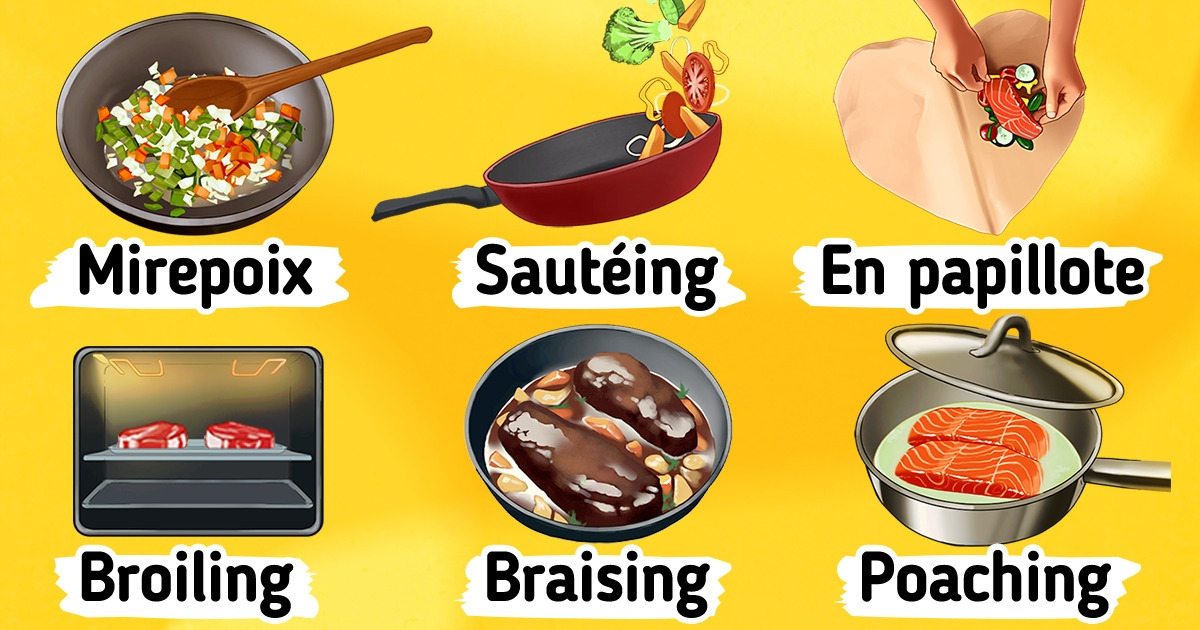
French cuisine is known for its food with unique ingredients, rich flavors, and good tastes. Whether you are an aficionado of good food, a gourmet, or someone who simply enjoys eating, learning some basic cooking methods is totally worth the effort. While French culinary techniques require patience to be mastered, at the end of the day using them will save you a lot of time.
5-Minute Crafts gathered some popular cooking techniques used in French kitchens just for you.
1. Mise en place
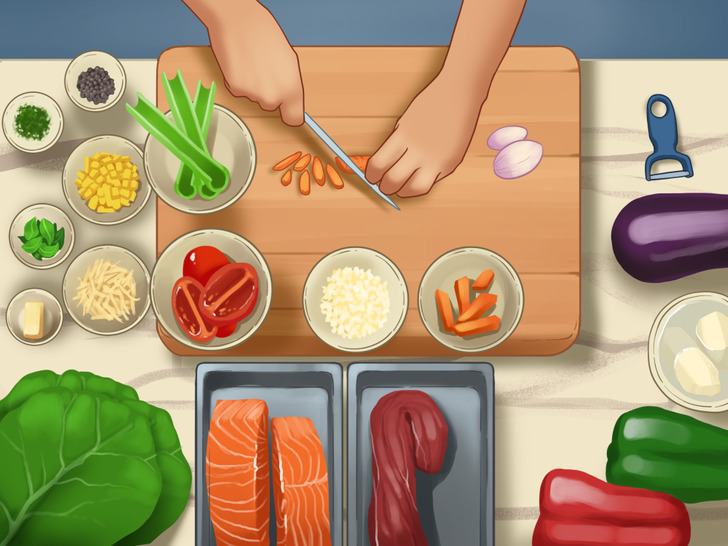
One of the most important steps in cooking is mise en place or shortly mise. It’s French for “set in place” or “gather.” This method is used in almost all professional kitchens. To put the mise en place in use properly:
- Read the recipe carefully. This way, you’ll be able to get prepared beforehand with which ingredients, tools, equipment, or utensils are needed. Also, you’ll know if ingredients should be kept at room temperature or in the fridge.
- Break the whole task into steps as per your recipe. If you need to wash, cut, chop, slice, mince, or dice, do so one by one. Then, place ingredients in separate containers or bowls and make sure they are close to you while cooking. Working this way will save you a lot of time.
2. Sautéing
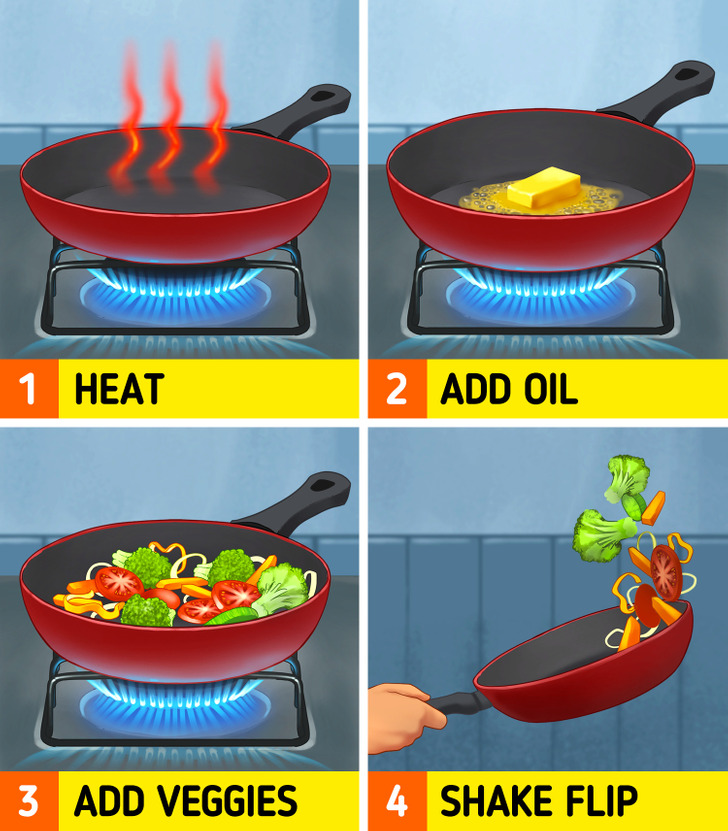
To sauté means to cook foods in a wide, shallow pan smeared with a thin coating of oil over high heat. Oiling prevents the food from sticking to the pan and aids in heat conduction. Sauté literally means “jump” and the method is named this way because moisture evaporates quickly due to the high heat and the ingredients jump while creating a sizzle.
When you shake the pan to flip them, the jumping ingredients will cook evenly. Sautéing is ideal for foods that require brief cooking, like tender vegetables, steaks, chicken breasts, etc. This method is also good for browning aromatics, making soup, stew, etc. Lamb chasseur is one of the many dishes that is prepared by sautéing.
- Note: Add just a few vegetables for the ingredients to move about constantly. An overcrowded pan is not ideal for sautéing.
3. Braising
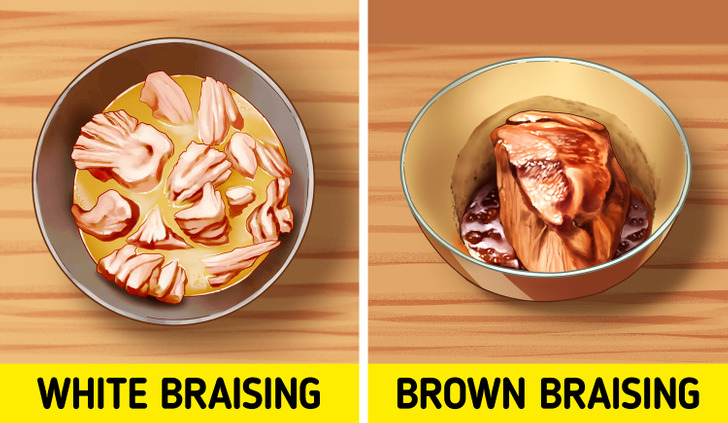
Braising is a cooking technique that is used not only in French cuisine but also in multiple kitchens across the globe. It uses dry- and moist-heat cooking. This word originated from the French word braisière, which means a braising pan or vessel. There are 2 main types of braising:
- Brown braising: ingredients are seared or sautéed first at a high temperature in oil to be browned and given a nice crust. Then, after adding some liquid like beef stock, tomato juice, etc., the temperature is lowered. Finally, it is left to be cooked longer in a covered pan. You can either use the stovetop or an oven to do this.
- White braising: It is called white because the meat doesn’t become brown. Instead, meat is simply blanched and then cooked in light or clear-colored liquid, like chicken or vegetable stock.
In both cases, when the liquid is added, the connective tissues of the food/meat are broken into gelatin, softening the muscle fiber, which in turn creates moist and tender food.
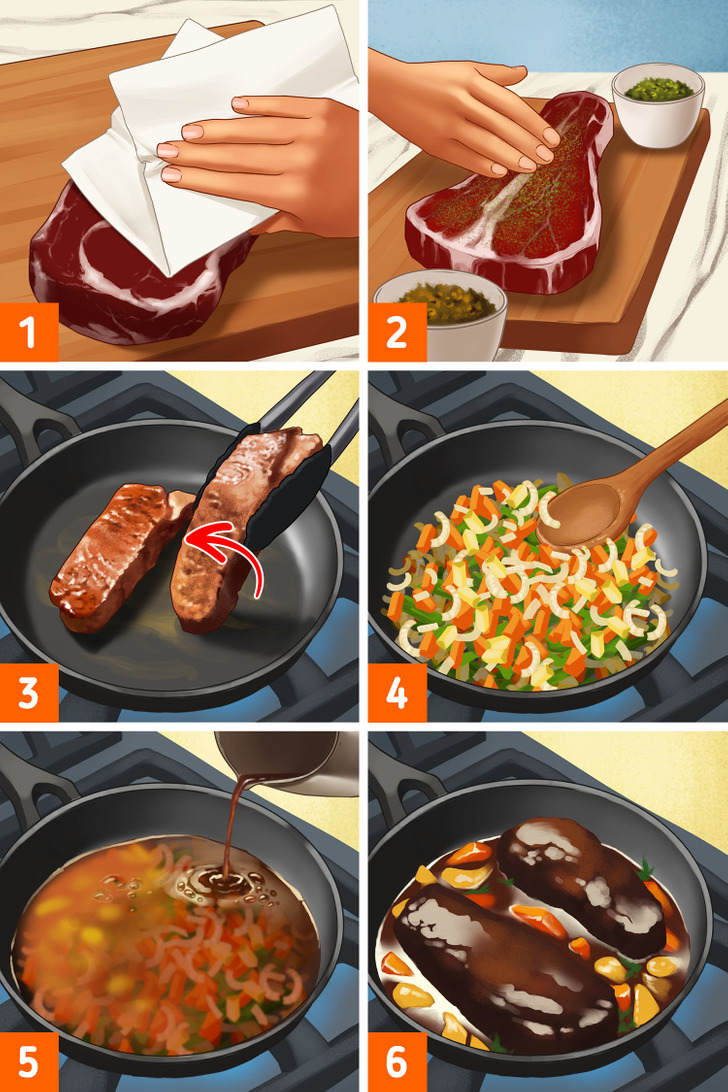
How to do it:
Step 1. Pat the beef dry with paper towels. This helps it brown more evenly.
Step 2. Add a spice rub or seasoning mix and sprinkle with salt and pepper. Following your recipe, prepare and chop some vegetables, like carrots, celery, onions, and garlic.
Step 3. Brown the beef on all sides, usually over medium heat, until it develops a rich brown color.
Step 4. Add the vegetables to a pan and sauté until they are softened.
Step 5. While the pan is still hot, slowly add some water, or beef broth, juices, etc. Using a wooden spoon or heat-resistant spatula, scrape up the bits to add flavor to your dish with the help of some liquid. This is called deglazing.
Step 6. Transfer the beef to the pan or slow cooker carefully. Add more liquid depending on your recipe. Following your recipe, turn down the heat, cover it with a tight-fitting lid, and let the moisture heat it. It is ready when the beef is fork-tender.
4. Broiling
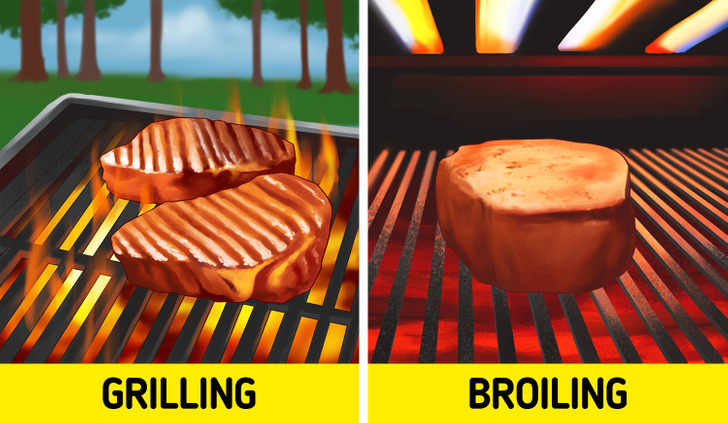
Broiling is one of the techniques used in French cuisine to cook on a rack under direct heat coming from the top of the oven. However, broiling has different variations in other international kitchens. The cooking happens very quickly, therefore you need to carefully watch your food with a timer before it burns or gets overcooked.
It is similar to grilling but differs in that the heat comes from the top, not from below. It is usually done in an oven by adjusting the setting to broil. This method is used to get a dish brown and crispy like meatloaf, glazed salmon, or mac and cheese.
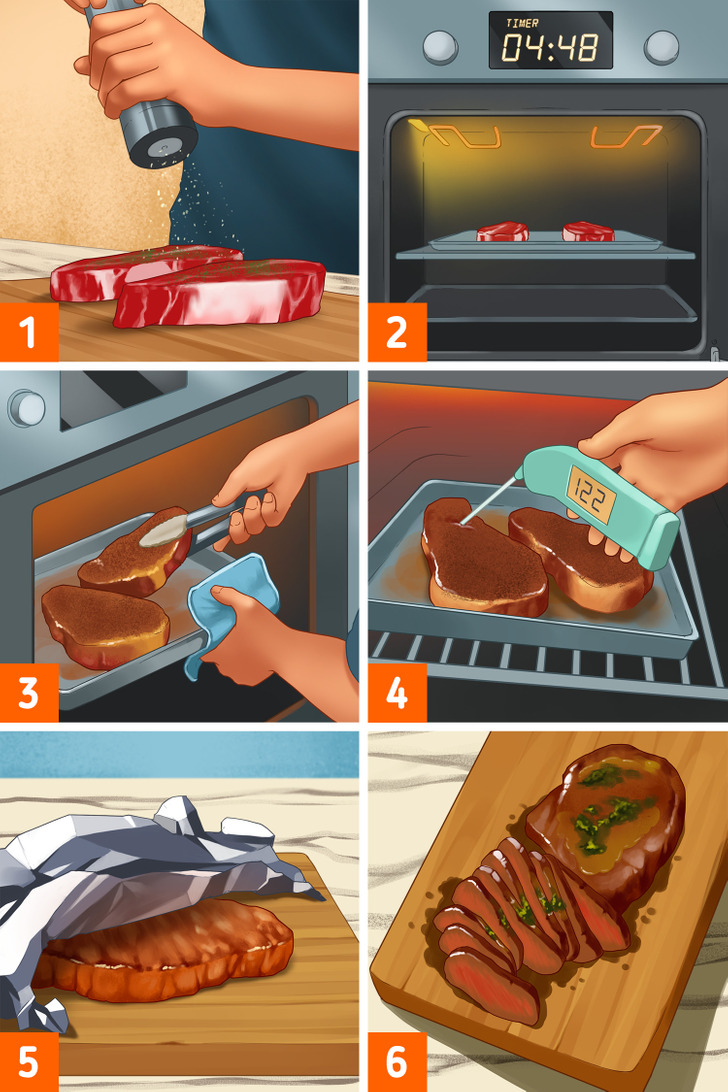
How to do it:
Step 1: Prepare your steak and season it as per your recipe. Turn on the broiler. Use a broiler pan for even cooking and to catch drippings. Have a timer ready.
Step 2: Keep the beef/steak close to the broiler, around 2-4 inches (5-10 centimeters). The moment you insert the steak under the broiler, start the timer.
Step 3: As per your recipe, flip the beef once halfway through.
Step 4: Once the time is up, check the doneness of your steak. You can use an instant-read thermometer.
- Note: The steak’s internal temperature will rise for a few minutes when it’s pulled out of the oven.
Step 5: Keeping it on a serving plate and covering it loosely with aluminum foil, rest the steak for 5 minutes before cutting. This way, your steak will be juicy.
Step 6: Slice your steak across the narrow part, then top it with some butter or sauce.
5. En papillote
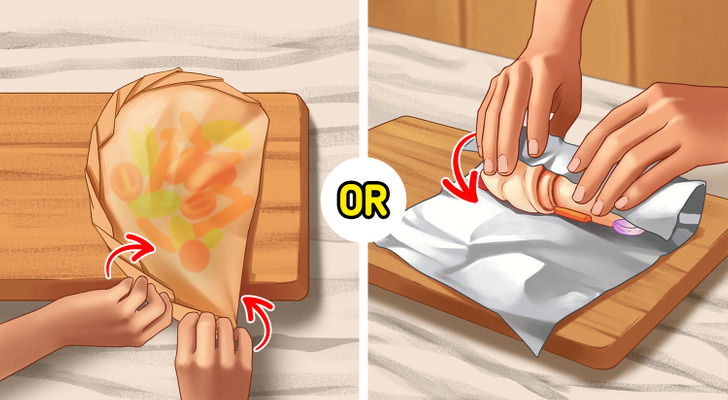
En papillote, which translates to “in the paper,” is a cooking method that uses built-up steam to cook ingredients, like thinly cut chicken breast, vegetables, and fish inside folded parchment paper, or aluminum foil. It’s a fast, simple, and healthy way of cooking food. Not to mention that the cleanup is as easy as simply tossing the paper packet after you are done cooking.
- Note: This technique is also used in some other cultures using other natural wrappers like banana leaves, lotus leaves, corn husks, among other things to steam food.
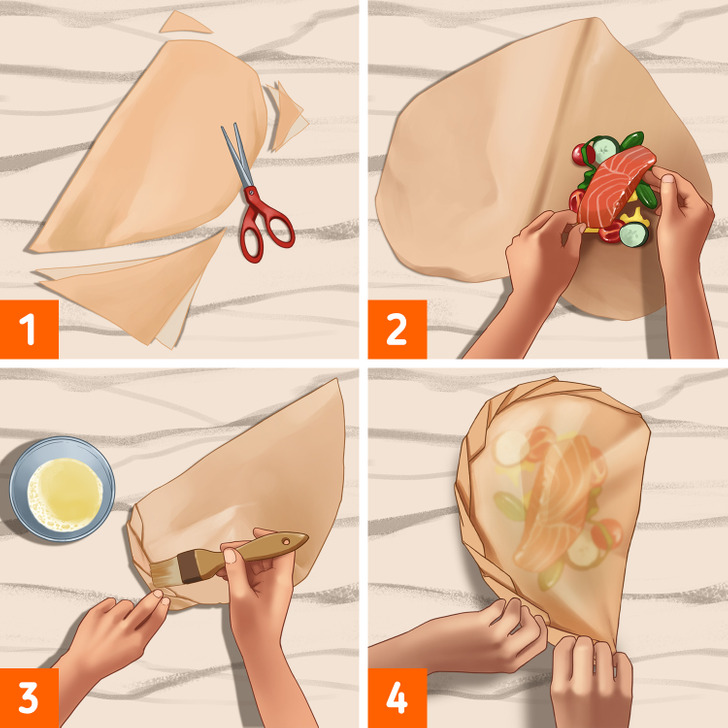
How to do it:
Step 1. Prepare the wrapping. To do so, fold a 14×12 sq. in. (35-30 sq. cm.) piece of parchment paper in half, and cut it to get a heart shape.
- You can also use aluminum foil instead to create a tighter seal. However, acidic ingredients may react with the aluminum after short cooking periods.
- Wax/plain brown paper may leak and cause burning, therefore it’s better to not use them.
Step 2. Place the fish fillet topped with vegetables and herbs on one side of the paper and add oil, butter, or a splash of broth to keep the fish moist.
- By doing so, the added or natural liquids inside the content will steam in the paper and then circulate back into the food when the internal temperature rises. The food will cook quickly while preserving the moisture at the same time.
Step 3. Season with salt and pepper to taste. Using egg white, you can brush the edges of the paper for a better seal.
Step 4. Keep folding the paper and tightly seal it starting at one end. Place in an oven and bake.
6. Mirepoix
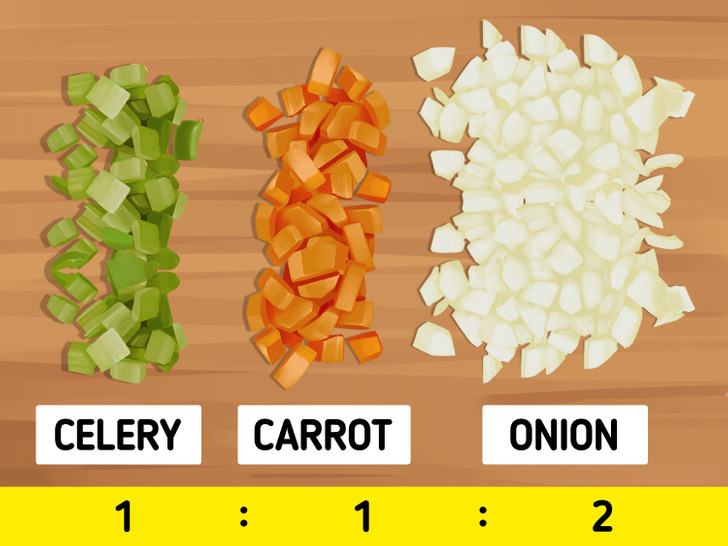
Mirepoix is a classic French cooking method with an important role in flavoring dishes. It is based on braising or simmering 3 flavorful vegetables: usually onion, celery, and carrots. There are other cultures across the world that use their mirepoix variations.
- The finer the veggies, the quicker the aroma and flavors will be released.
- A smaller chop results in shorter cooking times whereas a larger chop will cost you longer cooking times. In either case, make sure you cut everything in the same size, this way your vegetables cook evenly.
- Weight plays a significant role in determining the ratio of the ingredients. In case you don’t have a precise kitchen scale, you can use measuring cups. The ratio of the classic French version of mirepoix is a 2:1:1 ratio, and it refers to 2 cups onion, 1 cup celery, and 1 cup carrots.
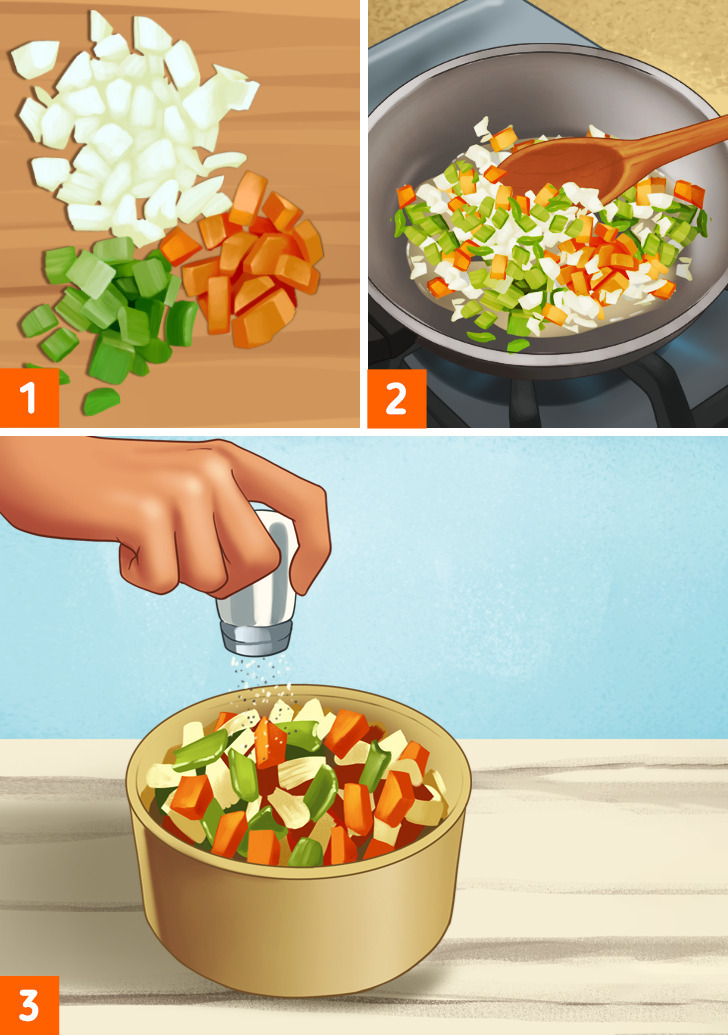
How to do it:
Step 1: Prepare onion, celery, and carrots. Chop them roughly in a 2:1:1 ratio, respectively.
Step 2: Start cooking slowly in butter or oil, over low or medium-low heat, until they’re soft and not browned.
Step 3: Strain out the vegetables or remove them from the final dish when the mirepoix is done. Season them according to your liking with some herbs, stock, additional vegetables, protein, etc.
7. Poaching
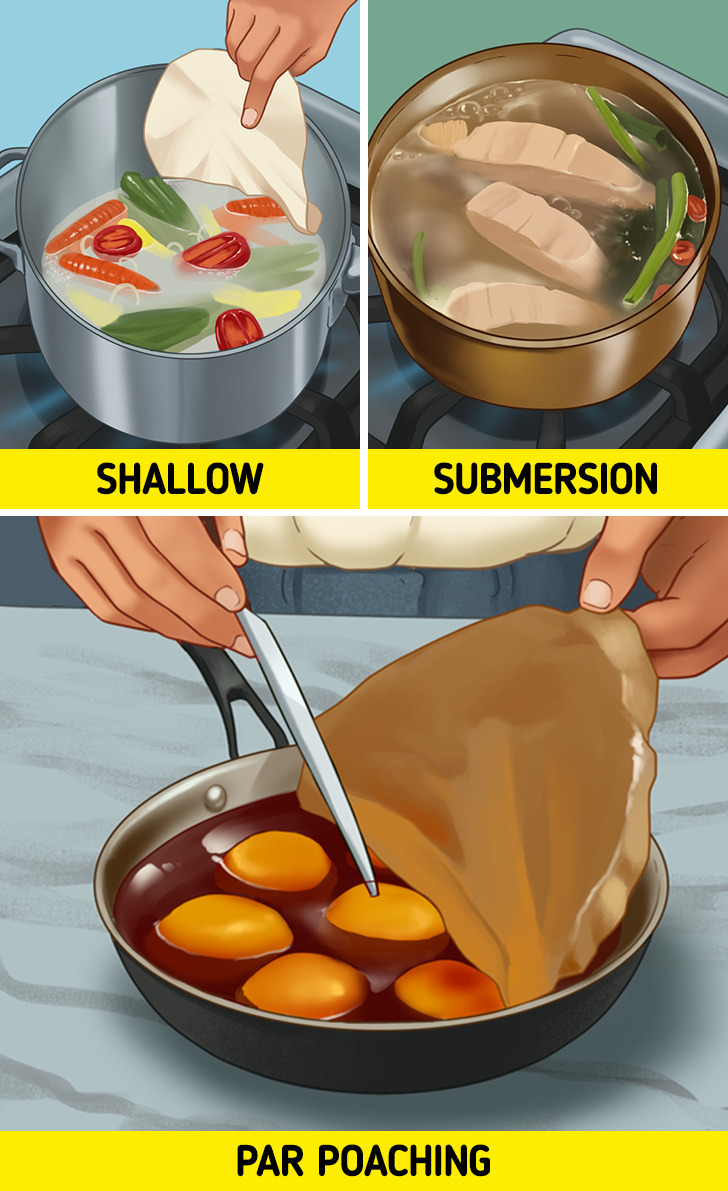
Poaching is a gentle way of cooking delicate proteins, like fish, chicken, and eggs, as well as some fruits and vegetables. It uses the moist heating technique and there are 3 different variations.
- In shallow poaching, the ingredients are partially submerged in the liquid. The liquid is usually a mixture of stock, water, lemon juice, and vinegar with aromatic vegetables, herbs, spices, etc. The cuisson is the liquid used in shallow poaching. After reducing, it can be used as a sauce.
- In submersion poaching, the ingredients are fully immersed in the liquid. A cover of parchment paper is required in submersion poaching to prevent the food from moving up and down. Having enough room in the pot for the liquid to expand is essential.
- Par poaching is a type of submersion poaching that is cooked half-time. The food is set aside for a doneness check with the tip of a knife.
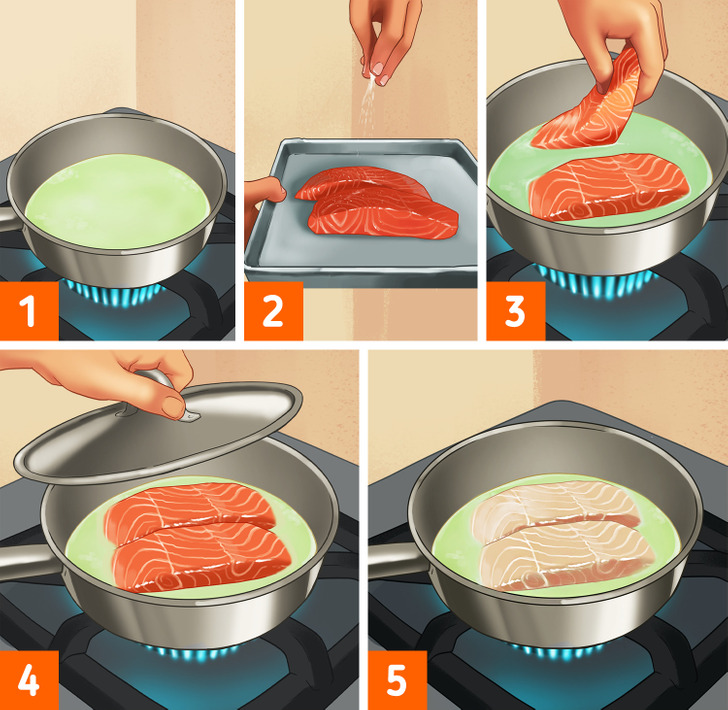
How to do it:
Step 1. Prepare the food, in this case, fish fillets, and the frying pan, which could be a wide, shallow pan.
Step 2. Make sure the liquid is at the right temperature which should be below the boiling point.
Step 3. Sprinkle the food with salt and carefully place it in the liquid.
Step 4. Close the lid and wait until it’s cooked.
Step 5. Then, take the food out of the pan and prepare a sauce with the remaining stock, to which you can add olive oil, butter, cream, herbs, vegetables, etc.
8. Déglacer
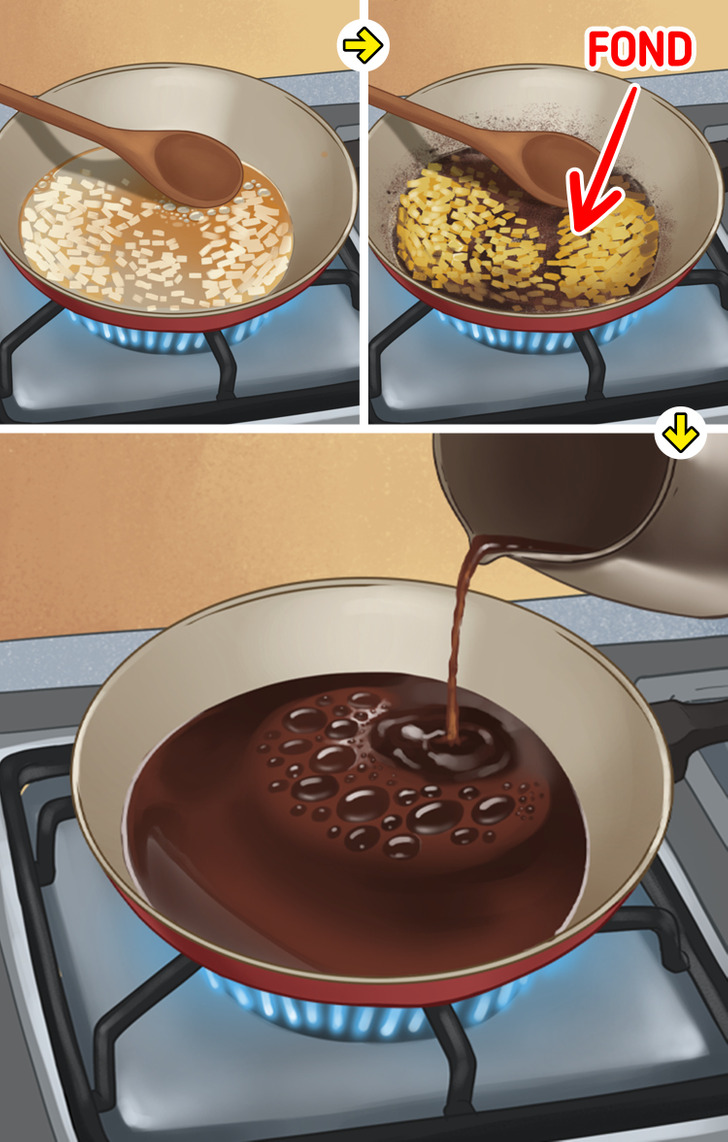
Déglacer is a technique of déglazing or loosening the brown, stuck-on, cooked food particles, bits, or deposits, a.k.a. fond or base, from the bottom of the pan after cooking. After adding a liquid like water or stock to the pan, it’s left at a low boil. Once it starts simmering, the bottom part is gently scraped up creating a flavorful sauce. Stirring helps dissolve the fond.
- The fond (base) is generally the caramelized drippings of meat or veggies.
- To get the best result, using the right pan is essential. A seasoned cast-iron skillet or stainless steel pan works well. A non-stick pan doesn’t work because the cooked food bits won’t stick to the surface.
9. Confit
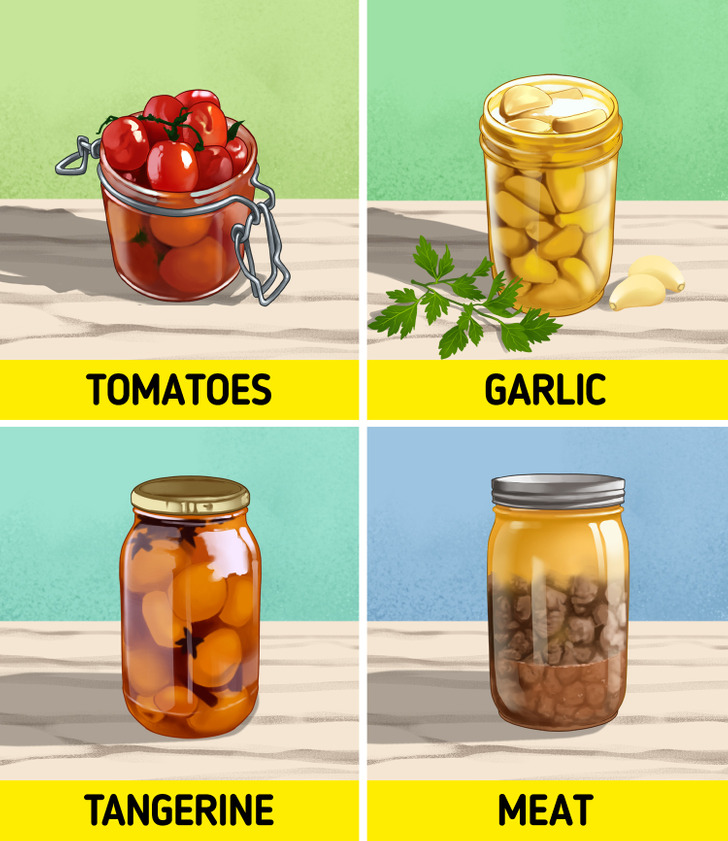
Confit is derived from the French verb “confire” and it means “to preserve.” Confit is one of the preservation techniques used in the kitchen to enjoy food that is not in season. It is long, slow cooking in oil (fat) at low temperatures around 90°C (200°F) or lower. The preserved food could be anything — meat, especially poultry, vegetables, fruit, etc.
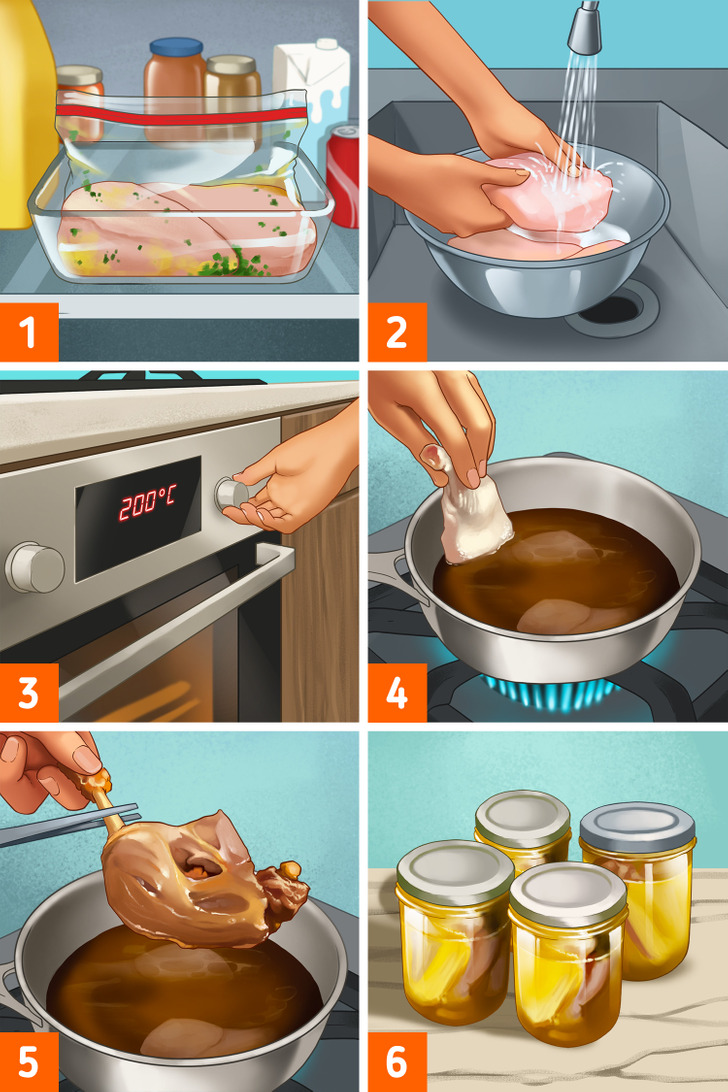
How to do meat confit:
Step 1. Prepare your spices, salt, and aromatics together to season your meat. Then, put your meat into a locked bag or a lidded dish, marinate it for 24 hours in the refrigerator.
Step 2. Upon marinating, get rid of the excess marinade. To do so, you can either rinse it under the tap or via a colander.
Step 3. Pre-heat your oven according to your recipe, and warm the fat until it’s fully melted.
Step 4. You can place the meat into the melted fat, or by using another pot, you can pour the melted fat over the meat.
- Note: The meat needs to be fully dipped in the fat.
Step 5. Cook your meat for hours. Set the temperature and hours according to your recipe. There are 3 ways to know the meat is done:
- When you make a hole in the meat with a knife or skewer, and no liquid comes out.
- The fat is clear.
- The meat isn’t floating.
Step 6. To store the confit, place the meat in a heat-proof container. Then, cover it completely in the melted fat.